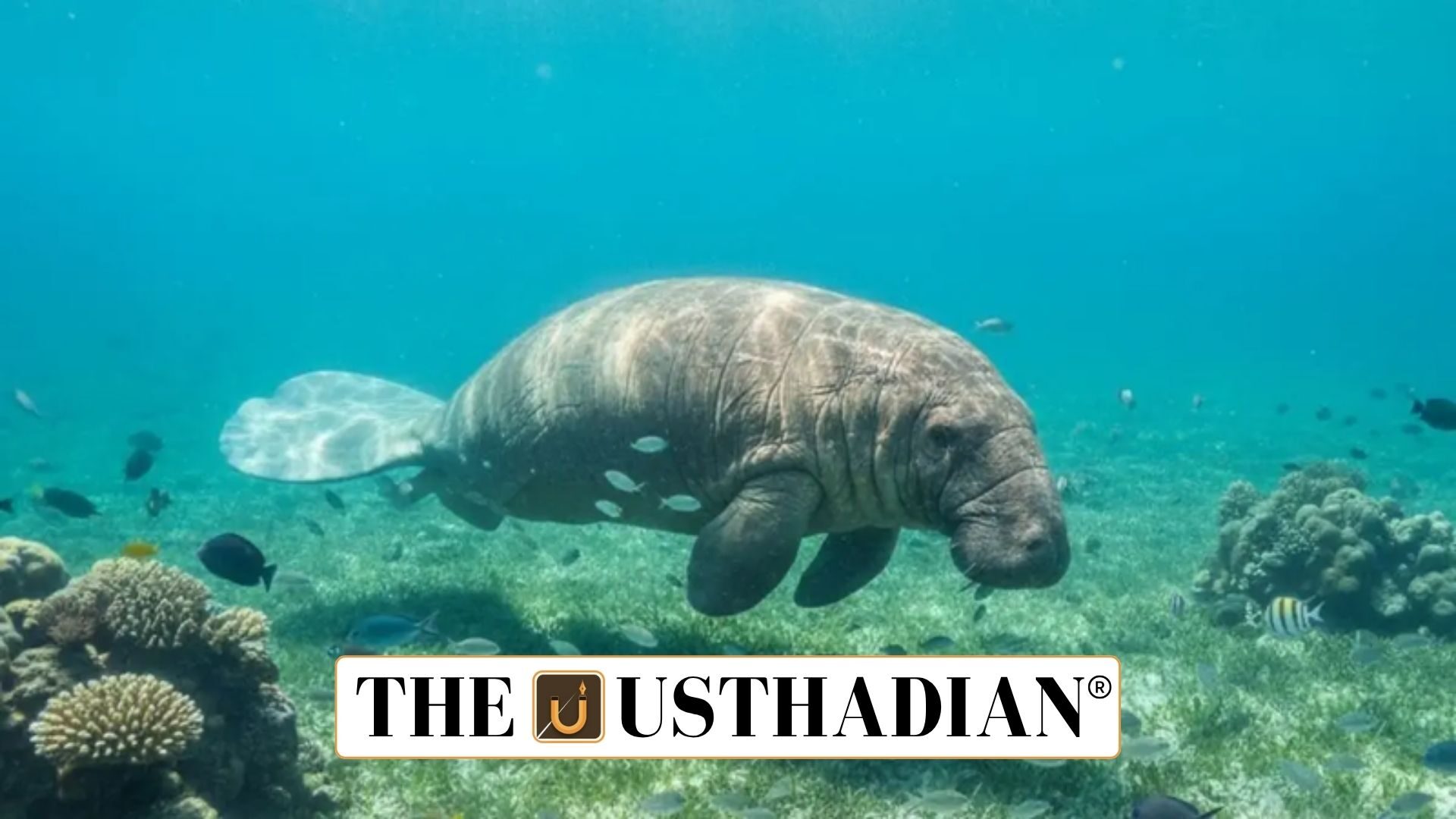Dugong Reserve in Palk Bay
Dugong Reserve in Tamil Nadu Gains IUCN Recognition: India’s first Dugong Conservation Reserve in northern Palk Bay, Tamil Nadu, has been officially recognized by the International Union for Conservation of Nature (IUCN) in 2025. Spread over 448.34 sq. km, this reserve was created in September 2022 under the Wildlife Protection Act, 1972.
The reserve holds over 12,250 hectares of seagrass meadows, which are vital feeding grounds for dugongs and crucial for marine biodiversity. Seagrass beds also act as natural carbon sinks, improving fish breeding and coastal protection.
Static GK fact: Dugongs are the only strictly herbivorous marine mammals and are also called “sea cows.”
Dugong the sea gardener
The dugong (Dugong dugon) is a gentle marine herbivore and a close relative of manatees. With a plump body, paddle-like limbs, and a dolphin-like tail, it feeds entirely on seagrass, consuming 30–40 kg daily.
Due to this unique feeding behavior, dugongs are termed “gardeners of the sea”, as their grazing maintains seagrass health, which in turn sustains fish populations and coastal ecosystems.
Static GK Tip: The word “dugong” is derived from the Malay language, meaning “lady of the sea.”
Habitat range in India
In India, dugongs are found in shallow, warm coastal waters rich in seagrass. Their main habitats include:
- Palk Bay
- Gulf of Mannar
- Gulf of Kutch
- Andaman and Nicobar Islands
These regions are biodiversity hotspots that also support coral reefs, mangroves, and numerous fish species.
Threats to survival
Despite their ecological importance, dugongs face major threats:
- Hunting for meat and oil
- Bycatch in commercial fishing nets
- Boat collisions in shallow waters
- Degradation of seagrass habitats due to coastal development and pollution
Currently, the species is listed as Vulnerable on the IUCN Red List and receives Schedule I protection under the Wildlife Protection Act, 1972.
Global importance of recognition
The 2025 IUCN recognition has far-reaching significance. It validates India’s commitment to conserving endangered marine life and draws global attention to Palk Bay’s ecosystem.
This recognition is expected to attract international research and funding, foster scientific collaboration, and create a model for future marine conservation reserves.
It also aligns with India’s commitment to SDG 14 – Life Below Water and supports the UN Decade of Ocean Science (2021–2030).
Static GK fact: India became a member of IUCN in 1969 and currently hosts the IUCN India Country Office in New Delhi.
Static Usthadian Current Affairs Table
Dugong Reserve in Tamil Nadu Gains IUCN Recognition:
| Topic | Detail |
| Location | Palk Bay, Tamil Nadu |
| Size | 448.34 sq. km |
| Establishment Year | September 2022 |
| Recognition | IUCN, 2025 World Conservation Congress |
| Species protected | Dugong (Dugong dugon) |
| Protection status | IUCN Vulnerable, Schedule I Wildlife Protection Act |
| Habitat regions in India | Palk Bay, Gulf of Mannar, Gulf of Kutch, Andaman and Nicobar Islands |
| Seagrass coverage | 12,250 hectares |
| Role of seagrass | Carbon sink, fish breeding, biodiversity hotspot |
| Global alignment | SDG 14, UN Decade of Ocean Science |








